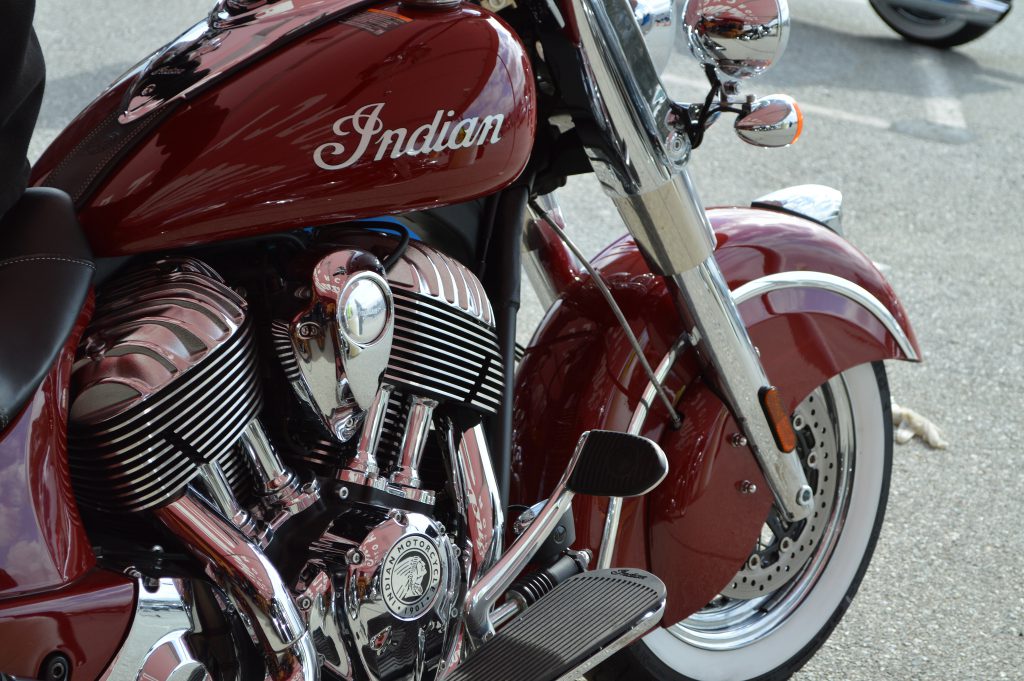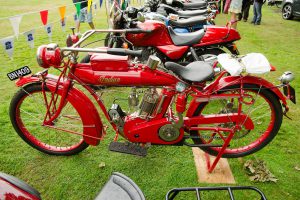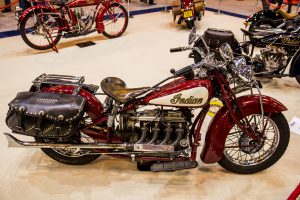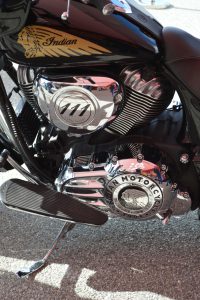
Polaris’ remake of one of America’s most treasured brands has made the bike its top-selling model.
When Americans think of the most iconic American-made cruising motorcycle, the first bike to come to mind is Harley-Davidson. Choppers. Hogs. Custom paint jobs. A cruising or “touring” motorcycle is a machine of luxury, style, history and innovation.
Competitive motorcycle racing sport bikes in today’s world are now the markets for lightweight foreign brands manufactured in countries that include Japan, Italy, and Germany. Yes, these are the same bikes that race 100 mph down the freeway while often recklessly weaving in and out of traffic. These sport bikes are already about a half mile past your car when the hearts of careful drivers begin uncomfortably pumping with thoughts of disaster averted.
When you see a pack of Harley-Davidson’s cruising past, it is generally not in a racing mode. They are there to enjoy the ride and display the unique, luxurious—but loud—style, for auto-bound motorists to admire.
The true love of hard-core motorcycle collectors goes back to 1901 when the manufacturing of Indian Motorcycles began in Springfield, Massachusetts.
Harley-Davidson motorcycles began production in 1903, but they weren’t the first All-American design to reach the mass market. The true love of hard-core motorcycle collectors goes back to 1901 when the manufacturing of Indian Motorcycles began in Springfield, Massachusetts. Indian bikes quickly became the top selling, most-beloved motorized two-wheelers in the United States.
The “Indian Motocycle [sic] Co.” was founded as the Hendee Manufacturing Company by George M. Hendee in 1897 to manufacture pedal bicycles. Bicycle racer and manufacturer Oscar Hedstrom joined forces with Hendee in 1900 to produce a bike equipped with a 1.75 bhp, single-cylinder engine that proved to be a huge success, selling approximately 500 motorized bikes in 1902. By 1913, the motorcycle, now known as the Indian Single, sold 32,000 motorized two-wheelers.

In the early years of motorcycles, Indian bikes made a strong showing in racing and record-breaking. One of the firm’s most famous riders was Erwin “Cannonball” Baker set many long-distance records. In 1914, he rode an Indian from San Diego to New York in a record 11 days, 12 hours and 10 minutes. After several attempts at competitive racing in England, in 1916 the original owners of Indian Motorcycles, decided to part ways.
When the United States entered World War I, Indian sold most of its Powerplus product line in 1917-18 to the United States government dealing a devastating blow to domestic availability of motorcycles. While Indian shared in the business boom of the 1920s, it had lost its No. 1 position in the U.S. market to Harley-Davidson.
In 1922, Indian introduced the Indian Chief, a 1,000 cc (61 cubic inches) engine based on its Powerplus engine. In 1930, Indian Motorcycles, now under the ownership of DuPont Motors, became distinctive for their head-dress logo on the gas tank. In 1940, all models were fitted with large skirted fenders that became an Indian trademark.
After a series of financial difficulties, ownership changes, style experiments, and bankruptcies, Indian was producing a limited amount of lightweight motorcycles. The manufacturing of traditional Indians was extremely limited in 1949 and no 1949 Chief models are known to exist. All product manufacturing ceased in 1953.
For periods of time, there were no actual Indian Motorcycles being manufactured at all as several entities held the Indian logo trademark but failed to manufacture a true American-made Indian product.
After 1953, Indian had a series of corporate successors which manufactured their own bikes and dressed them with the Indian logo brand. For periods of time, there were no actual Indian Motorcycles being manufactured at all as several entities held the Indian logo trademark but failed to manufacture a true American-made Indian product.

With several unsuccessful attempts for more than 50 years to revive the historic Indian Motorcycle name, Polaris Industries, an off-road and leisure vehicle maker and parent-company of Victory Motorcycles, acquired the Indian brand in 2011. The Indian production facilities were moved to Spirit Lake, Iowa, not far from Polaris headquarters in Medina, Minnesota.
In March, 2013, Indian unveiled its new 111 cubic inch “Thunder Stroke” engine and in August of that same year began selling three all-new stroke Indian-branded motorcycles based on the original styling of the Thunder Stroke 111 motor. The motor has a triple-cam design with a chain-driven center cam turning front and rear cams by way of gears. The parallel placement of the pushrods gave the modern Indians a similar appearance to the older Indian designs. The bike is air-cooled and sports the large traditional fins that were so distinctive of 1940s-era Indians. All Indian motorcycles share an aluminum-frame design and the integrated transmissions are all gear-driven.
In 2011, the Indian production facilities were moved to Spirit Lake, Iowa, not far from Polaris headquarters in Medina, Minnesota.
When Polaris revived the traditional Indian Motorcycle, it enlisted the help of one of the world’s foremost fans of the Indian brand. Mike Wolfe, creator, executive producer and co-host of History Channel’s top-rated show, American Pickers, signed on as the Indian Motorcycle spokesman.
Wolfe along with co-host and childhood friend, Frank Fritz, travel the backroads of America searching for hidden properties housing people’s antiques, collectibles or, more appropriately, “picker junk.”

Wolfe was smitten with motorcycles as a child and when he discovered Indian – the first American-made bike – a love affair began. When searching through huge barns of fellow pickers, he occasionally comes across an old, beat up Indian frame or motor. Immediately, his smile runs from ear to ear before he quickly puts on his game face for the upcoming bargaining process. But he knows he can’t leave the site without the Indian motorcycle or gear.
“When they asked me to be a part of this, I knew I just had to be in,” said Wolfe at the unveiling of the 2013 Thunder Stroke motor. “For a guy who knows a little history about bikes, this is a moment and time you don’t want to miss.”
Today’s modern 2016 models include the Scout, Chief Dark Horse, Chief Classic, Chief Vintage, Chieftain and Roadmaster. Once the engine is revved up, you won’t mistake the sound of an Indian bike for any other motorcycle motor.
Polaris’ remake of one of America’s most treasured brands of motorcycles has made the bike its top-selling model and restored Indian to classic American motorcycle status.
Visit the Indian Motorcycle website at www.indianmotorcycle.com.
